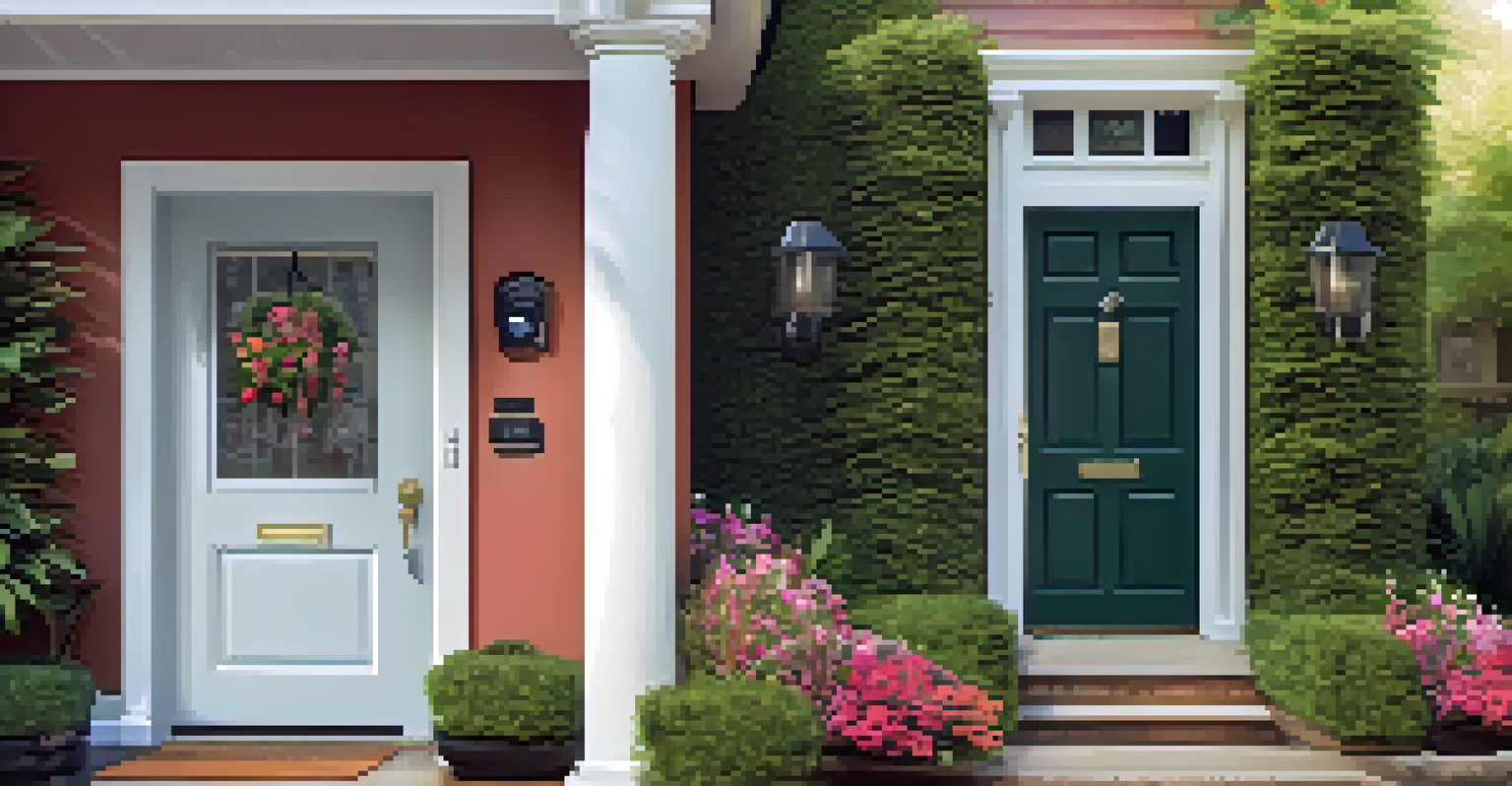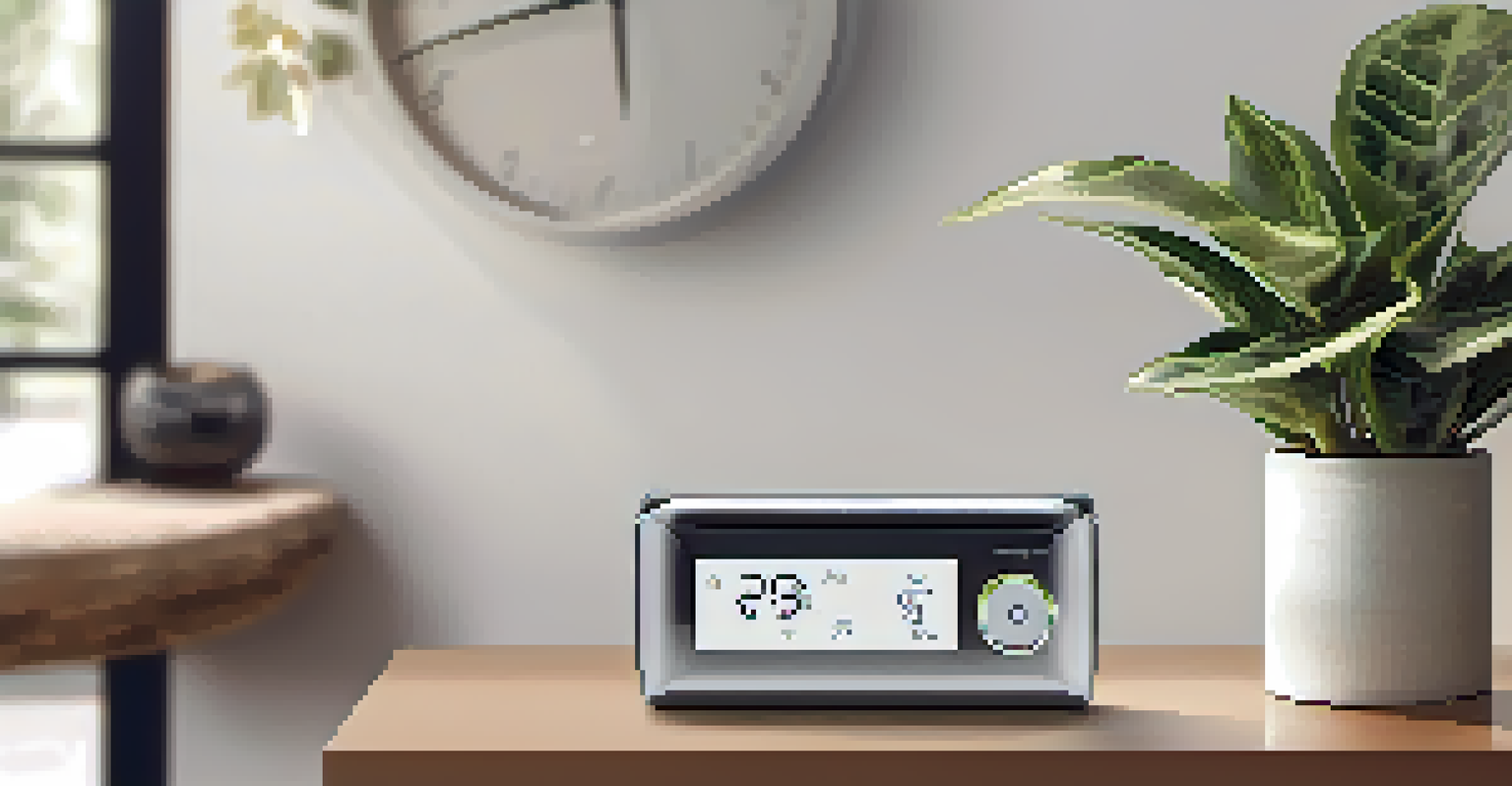Smart Home Integration: Creating a Seamless Experience

Understanding Smart Home Integration and Its Benefits
Smart home integration refers to the seamless connection of various devices in your home, allowing them to communicate with one another. By integrating devices like smart thermostats, lights, and security systems, you can create an environment that adapts to your lifestyle. This not only enhances convenience but also boosts energy efficiency, potentially saving you money on utility bills in the long run.
The future is already here – it's just not very evenly distributed.
Imagine coming home after a long day, and as you walk through the door, your lights automatically turn on, the thermostat adjusts to your preferred temperature, and your favorite playlist starts playing—all without lifting a finger. This level of convenience is what smart home integration aims to achieve. Furthermore, it offers valuable insights into your energy consumption patterns, making it easier to optimize your usage.
In essence, smart home integration transforms your living space into a responsive environment that caters to your needs. Whether you’re looking for improved security, energy savings, or just a more comfortable atmosphere, the benefits are hard to ignore. The key is to start small and gradually expand your system as you discover what works best for you.
Key Components of a Smart Home System
To build a smart home, it's essential to understand the core components that make up an integrated system. These include smart devices, a central hub, and a reliable internet connection. Smart devices can range from smart bulbs and plugs to smart thermostats and security cameras—the more devices you incorporate, the more seamless your experience will be.

A central hub acts as the brain of your smart home, allowing all devices to communicate with one another. Popular hubs include Amazon Echo, Google Nest, and Samsung SmartThings, each offering unique features and compatibility options. With a reliable hub, you can control all your devices through a single app or voice command, simplifying your daily routines.
Smart Homes Enhance Convenience
Integrating smart devices allows for automated home environments that adapt to your lifestyle, enhancing daily convenience.
Lastly, a strong and stable internet connection is crucial for ensuring that your devices function correctly and respond promptly. Without it, you may experience lags or disconnections, which could disrupt the seamless experience you’re aiming for. Investing in a good Wi-Fi router can make all the difference in maintaining a smoothly integrated smart home.
Choosing the Right Smart Home Devices for Your Needs
With numerous smart home devices available on the market, selecting the right ones can feel overwhelming. Start by identifying your specific needs and priorities. For example, if energy efficiency is your goal, consider smart thermostats or energy-monitoring plugs that can help you track and reduce your energy consumption.
Technology is best when it brings people together.
Another approach is to evaluate your lifestyle. If you travel frequently, you might prioritize smart security devices like cameras and doorbell monitors to keep an eye on your home. Alternatively, if you love convenience, smart speakers and voice assistants can make everyday tasks more manageable, from setting reminders to controlling your devices with simple voice commands.
Ultimately, the best devices for your smart home are those that align with your unique lifestyle and preferences. Take time to research and read reviews to ensure you choose quality products that are compatible with your existing ecosystem. This thoughtful approach will make your smart home experience both enjoyable and efficient.
Integrating Smart Home Devices for Maximum Efficiency
Once you've selected your devices, the next step is integration. This often involves connecting your smart devices to a central hub and ensuring they can communicate effectively. Depending on the devices you've chosen, you may need to download specific apps or use a universal app that supports multiple brands.
To achieve maximum efficiency, consider creating 'scenes' or 'routines' that automate your devices based on specific triggers. For example, you could set a routine that turns off all lights and locks the doors when you leave the house or a scene that sets the mood for movie night by dimming the lights and turning on the TV.
Boost Security with Smart Tech
Smart security systems provide real-time monitoring and alerts, significantly enhancing the safety of your home.
These automations not only enhance convenience but also ensure that your devices work together harmoniously. As you continue to explore the capabilities of your smart home, you'll find new ways to streamline your daily tasks and create an environment that truly feels personalized.
Enhancing Home Security with Smart Technology
One of the most compelling aspects of smart home integration is its potential to enhance security. Smart security systems can include cameras, door sensors, and smart locks, providing you with real-time monitoring and alerts. This technology gives you peace of mind, knowing you can keep an eye on your home from anywhere using your smartphone.
For example, with a smart doorbell camera, you can see who is at your door and communicate with them without being physically present. This feature is especially useful for package deliveries, allowing you to ensure your items are safe and secure. Additionally, smart locks enable you to grant access to trusted individuals, eliminating the need for spare keys.
As you integrate these security devices into your smart home system, you can create automated routines that enhance your safety. For instance, your lights can automatically turn on when a camera detects motion outside, deterring potential intruders. By taking advantage of smart technology, you can significantly bolster your home’s security while enjoying the convenience it brings.
Energy Efficiency: Saving Money with Smart Devices
Smart home integration is not only about convenience; it also plays a vital role in energy efficiency. Smart thermostats can learn your habits and automatically adjust the temperature based on when you are home or away, helping to reduce energy waste. This means you can enjoy a comfortable home while keeping your energy bills in check.
Additionally, smart plugs allow you to monitor and control the energy consumption of individual devices. By scheduling non-essential devices to turn off when they're not in use, you can reduce your overall energy footprint. This feature is particularly beneficial for devices that consume power even when turned off, such as chargers and entertainment systems.
Energy Efficiency Saves Money
Smart devices help track and reduce energy consumption, leading to lower utility bills and a more sustainable lifestyle.
In essence, integrating energy-efficient smart devices into your home not only saves you money but also contributes to a more sustainable lifestyle. The insights you gain from your devices will empower you to make smarter choices about energy use, ultimately benefiting both your wallet and the environment.
The Future of Smart Home Integration: Trends to Watch
As technology continues to evolve, the future of smart home integration promises even more exciting innovations. One trend to watch is the rise of artificial intelligence (AI) in smart home devices, allowing them to learn and adapt to our preferences over time. This means your smart home could become even smarter, anticipating your needs before you even voice them.
Another trend is the increased focus on interoperability, where devices from different manufacturers communicate seamlessly. As consumers demand more integrated solutions, companies are prioritizing compatibility, enabling you to mix and match devices without worrying about connectivity issues. This shift will empower you to create a truly personalized smart home experience.

Moreover, sustainability will likely play a significant role in the future of smart homes. Expect to see more energy-efficient products and systems designed to minimize environmental impact. As we become more conscious of our carbon footprint, smart home technology will continue to evolve, making it easier for everyone to embrace eco-friendly living.